Want to know how to live Off-Grid Vanlife without solar power? I know it may seem like today all campervans are built with solar power. But there are some other options. Say you live in an area without much sun. Or you think wiring a complete electrical system is too daunting. Or you’re on a tight budget and just can’t afford it yet. No matter your reasoning, here are all the best methods for handling off-grid Vanlife electrical without solar power.
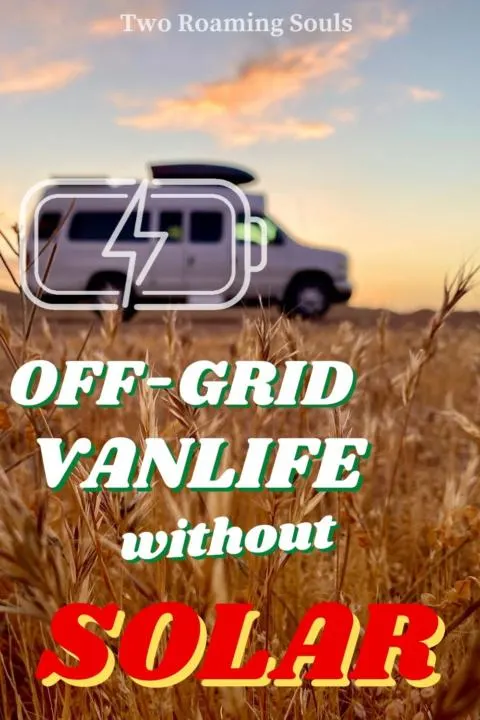
If you’re only intimidated by wiring but still want solar, check out these great Plug-and-Play options: Best Portable Solar-Powered Generators For Vanlife and Camping. They require basically no setup or wiring to have clean, renewable, solar power! They are even easier to set up that several of the options below.
This post may contain affiliate links. Disclosure policy.
But before we get started, there are just a few terms and concepts that are important to understand.
Starter Battery versus House Battery
Throughout the post, I will refer to “Starter” battery and “House” battery.
The Starter Battery is the one that all vehicles have under the hood that starts the engine and powers the vehicle’s electronics (lights, sensors, stereo, etc.)
The House Battery refers to any additional battery(ies) used to power all the electronics in the “House” area of the van. Things like a fridge, interior lights, outlets, fans, pumps, etc.
However, you can’t just run to Auto-Zone and buy another starter-type battery. Instead, you need a “deep-cycle” battery (usually 12v or 24v) to use as your house battery. They are designed to handle prolonged discharges over much longer periods of time. (Other common names for a house battery are coach, auxiliary, and leisure battery).
AC versus DC
But having a 12v (or 24v) DC house battery is only half the story. Most vanlife setups will include an inverter that converts the DC (direct current) from the battery into AC (alternating current) that’s used for powering laptops, TV’s, blenders, or anything that plugs into a normal wall outlet. An inverter can either be powered via your starter battery or house battery.
It is possible to live with just DC from a battery, but you will be limited to just DC electronics. So for complete Vanlife electrical without solar, you should plan on having an inverter to supply AC (alternating current).
And one other note: converting DC to AC results in lost power. So you should always try to power as many things as possible off DC power. Use AC power only when necessary.
Battery Isolator/Charger
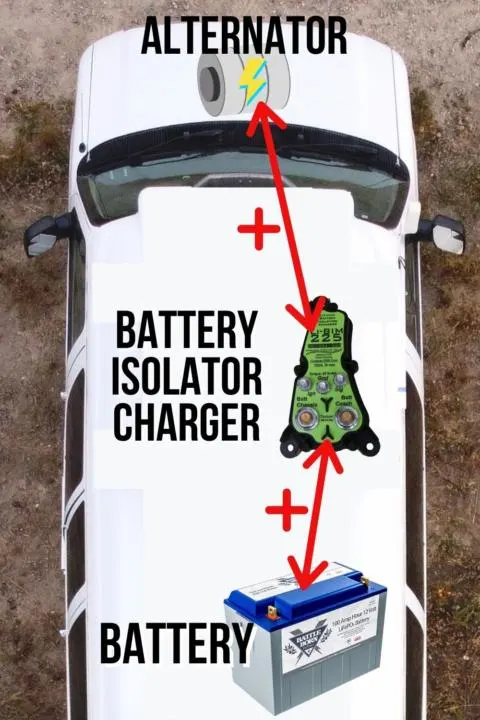
One common way to charge a house battery is using something called a battery isolator (or battery charger) that connects to your vehicle’s alternator. The sole purpose of an alternator is to charge the starter battery, but it can also be wired to charge your house battery as well. This allows you to have Vanlife electrical without solar panels.
However, the alternator only creates power when the vehicle is running. So your charging capability is limited to how much driving you do.
Basically, the battery isolator/charger generally gives priority to the starter battery to make sure it’s sufficiently charged up, and then automatically manages how to charge the house battery(ies).
And one other bonus perk is that many battery isolators allow you to use your house battery to jumpstart a dead starter battery. This is nice if you travel far off-grid and can’t always rely on other people for a jump.
How To Choose The Right Battery Isolator
You need three important pieces of information:
- Type of House Batteries you Have (Lithium or Lead-Acid/AGM)
- Max Amp rating of your alternator (in manual, or stamped on the alternator itself)
- Voltage of House Batteries you have (Usually 12v or 24v)
It’s important to choose a battery isolator that fits your specs.
For Lithium Batteries
I recommend this Lithium Battery Isolation Monitor (rated to 225 Amps).
For Lead-Acid/AGM Batteries
For alternators over 120Amps, I recommend this Blue Sea Systems ML ACR (or if you have 24v batteries = 24v Version ML-ACR).
For alternators up to 120Amps, I recommend this Blue Sea Systems SI-ACR (12v/24v)
DC to AC Inverters
But both starter and house batteries can only supply DC power. So what about AC power for charging things that require a normal household plug like laptops, blenders, coffee makers, and other AC appliances?
In order to charge or power AC devices you need an inverter. These devices are designed to convert the DC to AC so you can charge/power AC devices and appliances. They are a key part of having comprehensive Vanlife electrical without solar, otherwise you are limited to only DC power.
Pure Sine Wave vs Modified Sine Wave
The two different technologies associated with AC Inverters are Pure Sine Wave and Modified Sine Wave. This refers to the oscillation in the current. But basically, Modified Sine Wave is cheaper but runs less efficiently (about 30%) and may cause damage with certain delicate electronics. Pure Sine Wave costs more, and will work with everything.
I feel that the need for Pure Sine Wave is somewhat overstated by manufacturers. HOWEVER, the difference in price is not that dramatic, so I personally lean towards getting Pure Sine Wave just so I don’t need to scrutinize everything I want to plug in. Plus, your devices will run without making a humming noise, or at reduced efficiency/lifespans.
What Size Inverter Do You Need?
It’s important to have an understanding of how much power you need, but also how much power your batteries can deliver. Which isn’t common for your average person because when you live in a normal house on-the-grid, you just plug things into the outlet and they work. No need to concern yourself with whether it’s using 80watts or 800watts.
But for Vanlife electrical without solar, you need to be much more aware of your specific power needs. So for a quick example, my laptop only requires about 60 watts to charge. But an average toaster oven requires about 1,400 watts. Clearly, these two common items are not in the same ball park.
So you really need to evaluate what exactly you are trying to power to choose an appropriate size inverter. Most devices or appliances will have specs printed on them or their power supply that tell you how much power they use. Look for “W” or “Watts”, or you can covert ratings given in Amps with this formula: [ Watts = Amps * Volts ]
As long as you aren’t using devices/appliances simultaneously, then you only need to worry about the individual power draw of each device. But anything you use at the same time will require you to add the power draw together. For example, if you want to run an Xbox One game console (≈ 110W) and a TV (≈ 50W) simultaneously, then you have to account for both power draws together (≈ 160W).
And most inverters and devices are rated in continuous Watts, that is, the number of watts they can produce. You may see different numbers for “surge” and “continuous”. Things like motors often require extra power on start-up, but then less power once they are running. And some inverters can handle extra load for just a moment, or “surge”.
The last important detail when sizing an inverter, is to get one with about 20% more power than you need. Sadly, most inverters advertise their performance under ideal conditions, so assume that you will probably get 5-20% less power than advertised. And you don’t want to be working your inverter against its upper limits regularly. So plan on getting an inverter with a little margin of extra power above what you need.
And lastly, one common complaint about inverters is that they are supplied with wires that are too skimpy to safely handle the expected loads. So check the wire size against this Wire Size Calculator to make sure that they are safe with your specific setup. And be prepared to shell out a little extra money for the proper size wires.
House Battery Inverters
One common way to power an inverter is by connecting it to your house battery. These are typically installed near your house battery, but outlets or extension cords can be wired around the living area of your van for convenience. Wiring an inverter this way does require decent knowledge and skills of electrical. If you want to learn the basics, check out my post: Wiring, Connectors, and Crimping.
And certain inverters allow you to plug into shore power and charge your house batteries that way. This is a great option for vanlifers who are often near places where they can charge from the grid. If you plan to park at family or friends houses, or frequent campsites with electrical hookups, then charging your house batteries via an Inverter/Charger is a great perk.
The Inverter that I can recommend from personal experience in this Xantrex 1000W Inverter (PSW). Emily and I have this one installed in our campervan and it is a great unit for those on a tight budget. It can even handle up to 2000W surge power. They also make 600W and 2000W versions that are other common sizes for vanlife.
However there are plenty of other brands that make good inverters; Giandel, Samlex, GoWISE, and Victron…. to name a few.
Vanlife Without A House Battery
But what if you don’t want to purchase a separate house battery? Is it possible to have viable Vanlife electrical without solar or without a separate house battery?
Yes, sort of. These are the three best ways to supply power without an installing a separate house battery.
1) Use Power From Your Starter Battery
Using the cigarette lighter sockets or built in USB ports to power DC devices/appliances. And then you can connect an inverter to your starter battery for AC power.
2) Rely On Portable Powerbank(s)
You can charge portable powerbanks from on-grid locations to have power stored for off-grid use.
3) Use A Gas Generator
You can use a tried-and-true gas generator to create power.
Starter Battery Power
I’m sure that you’re familiar with the cigarette lighter sockets in your car or van. Or newer vehicles sometimes come with USB ports built in. Either way, these outlets supply DC power from the vehicle’s starter battery. You can charge and power all kinds of DC electronics with the engine running. This is the easiest method for Vanlife electrical without solar, because all vehicles come with cigarette lighter sockets or usb ports.
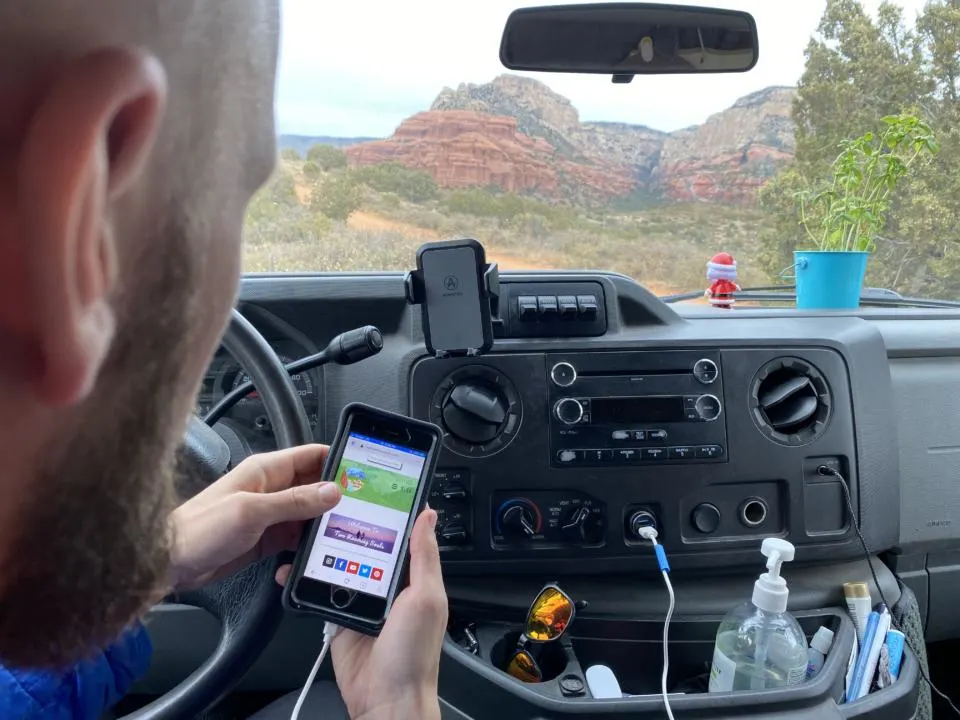
But again, once your engine is off, you need to be cautious about how much power you drain from your starter battery. Luckily, charging just a few small electronics like phones or camera batteries won’t drain your starter battery.
If your van only has cigarette ports, then you will need an adapter. The most common ports that people use are USB-A (the old one) and USB-C (the newer one). And don’t be fooled, not all adapters are the same in terms of power. I explain some of the best options below.
If you only need USB A ports, I’ve been using this Anker Adapter for years. But don’t just take my word, it has over 15,000 5-Star reviews.
Or if you want both USB-A and USB-C, this top-rated one has both, which can somewhat “future-proof” your investment. The USB-C port can even charge some laptops (albeit slowly) that have USB-C, like newer Macbooks and some PC’s.
However if you really want to charge a Macbook Pro using USB-C, I would recommend getting this MikeGyver 60W adapter that is specifically designed to provide enough power to charge a laptop quickly and fully.
But what about other standard Vanlife comforts that you might want to use daily? Can you power a fridge off of your starter battery?
Unfortunately, you can’t expect to power a fridge, lights, fans, and other long-term power-draining devices. A starter battery is just not designed for delivering consistent power over many hours if the engine is off. So it’s just not a viable strategy for consistent daily power needs.
Car Inverters For AC Power
For powering AC devices from your starter battery, you can purchase a car inverter. But they should only be used while your engine is running. And you may actually need to be driving and not just idling to produce enough power.
Car Inverters either plug into the cigarette socket, or have clips/lugs to connect directly to the starter battery terminals. The primary difference between the two methods being the amount of power they can provide.
When the inverter is plugged into the cigarette socket, it’s maximum power output will be capped by the fuse to the socket (usually ≈150Watts). If you go over, then you will blow the fuse.
If you connect directly to the battery terminals, then you are theoretically, only limited by how much wattage the inverter, starter battery, and alternator can deliver. For inverters that connect directly to the battery terminals it will require some tools and proper knowledge of basic wiring and electrical.
So obviously, it’s much more user-friendly to just plug into the cigarette socket. So I would only suggest getting an inverter that is wired to the battery if you need more than ≈150 watts.
Here are the best options in each category.
Up to 150 Watts
This Bestek Inverter is consistently well-rated. I know it says 300W, but they only supply a cigarette socket plug, so you will be capped to about 150W for the reason I described above. (Or here is the Pure Sine Wave Version)
Up to 1000 Watts
MSW – This Krieger Power Inverter is a great option for those who need power up to ≈1000 watts. But you will need to wire the inverter directly to your starter battery with the supplied cables.
PSW – This Bestek Power Inverter has great reviews. [except for being supplied with too small of wires]. But replacing the wires isn’t a huge problem.
Greater Than 1000 Watts
For inverters over 1000watts, you need to actually pay attention to what size alternator you have. And of course, you need to wire them directly to your starter battery.
The average alternator is around 130 Amps, but some larger heavy-duty vehicles may have up to a 225Amp alternator. And it is possible to replace your alternator with a more powerful one if you want to go that route.
To figure out how many watts your alternator can handle, multiply the amps by 12 to figure out roughly what size inverter you can run. { Amps x Voltage = Watts }
So a 225 Amp alternator connected to a 12 volt battery can roughly power a 2,700 watt inverter. [225 x 12 = 2700 Amps]
MSW – This Kreiger 2000W Inverter is a great option if you need of a little more power. But it is only Modified Sine Wave.
PSW – This Xantrex 2000W Inverter is a great option if you want a Pure Sine Wave Inverter with a lot of power.
Charge Portable Powerbanks From Grid Power
Or another method for Vanlife Electrical without solar is to charge powerbank(s) with shore power. If you have regular access to grid power, then you can charge up a battery or powerbank and then live off that power.
So say for example that you work a regular job, you could bring your powerbank to work and charge it while you are on shift. Obviously, this depends on your job, if you feel safe leaving your powerbank charging unattended, or your employer allows it, etc. And you also may have trouble making it through the weekend unless you have a really big powerbank. Also you cannot power anything in the van while you are gone if you take your only powerbank with you, so keeping a fridge running 24/7 is out of the question.
If you only have small DC power needs, you could probably survive by charging up a couple small powerbanks like this Anker Powerbank.
But for more comfortable off-grid living, I would suggest this Jackery 1000W powerbank that can charge via AC grid outlet in just 7 hours. (Or check out All the Best Portable Powerbanks For Vanlife).
Gas Generator
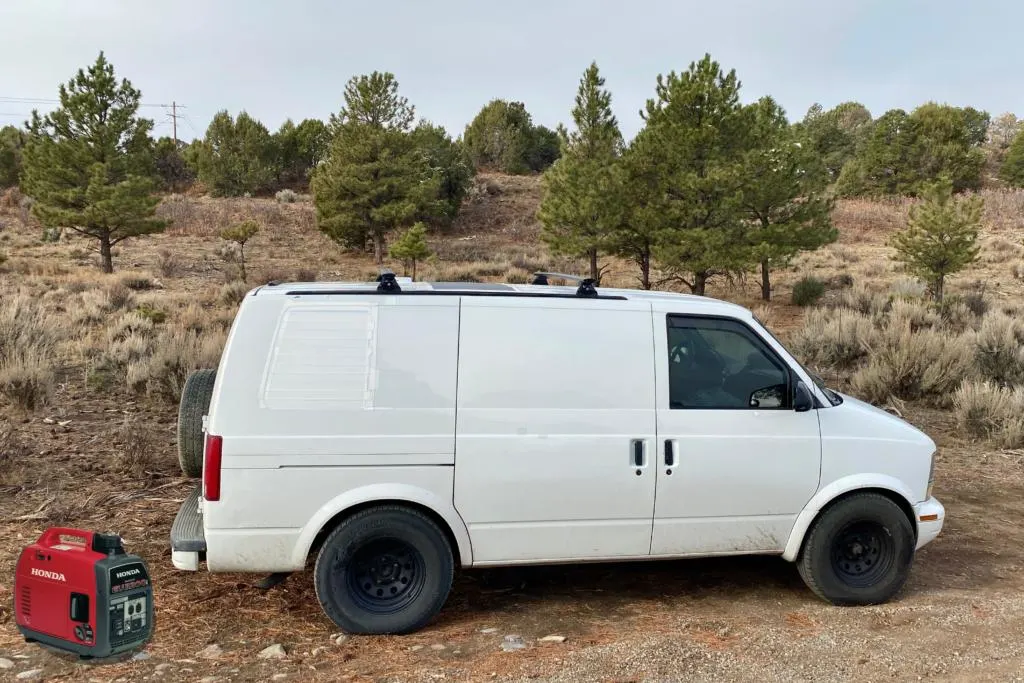
Before solar, gas generators were the go-to method of creating power off-grid. They still get a fair bit of use because they are reliable, portable, and as long as you keep feeding them gas, they will create electricity. They usually have AC and DC power outlets, so it is possible to get by with just a gas generator powering things as needed.
However, they are noisy, create fumes, and obviously require gasoline and oil changes. And don’t expect to run your generator all night, because they may be restricted in campgrounds, or be to noisy for you or your “neighbors”. And even with the impressive fuel efficiency, the fuel costs will begin to add up.
This Honda 2200i Gas Generator is widely regarded as the best generator on the market.
- Produces 1800W continuous
- 1 gallon of gas lasts 3hrs at 100% load, and 8hrs at 25% load
- Between 48-57 decibels (based on load)
Or if you are looking for a budget pick, The Wen 56200i is about half the price and has many happy customers.
Can You Charge a Deep Cycle Battery With a Gas Generator?
Gas generators are generally better for powering things directly, rather than charging house batteries to store power for later. The DC output is simply too weak and unregulated to provide a proper full charge for 12v deep-cycle batteries.
But what if you’re still committed to charging a house battery so that you can have electricity when the generator is off?
To charge a deep-cycle battery properly with a gas generator you should invest in a separate AC to DC battery charger. A suitable one will probably cost a couple hundred dollars. The key benefits are that you can actually provide a full charge to a deep-cycle battery in a few hours. And they help regulate the power coming from the generator to ensure that your batteries aren’t damaged.
Conclusion: Vanlife Electrical WITHOUT SOLAR
As you can see, solar power is not the only option when it comes to powering your campervan. You can take advantage of other means to collect and store electricity.
If you are not comfortable with any wiring then your best option is to use a cigarette lighter socket adapter to charge DC electronics via USB. And then pair that with a car AC inverter that plugs into the cigarette socket. Or you can check out some of these plug-and-play portable solar-powered generators. Seriously, they are very user friendly and a great option for someone who is intimidated by wiring.
Nearly all the other options require some amount of wiring. So you should either educate yourself on basic wiring and safety so that you can install a battery isolator, house battery, inverter, or some combination of these options. Otherwise you could outsource the work to a professional.
Our personal philosophy is that if you invest in a house battery(ies), then it’s almost always worth it to have some solar panels. Solar panels are not really the expensive part of a solar setup anyway. So it’s usually cost-effective to collect power with solar panels.
There’s only a few situations I could understand not using solar.
- If you live in an area with very little sunshine.
- If you don’t have space on your roof for solar panels.
- If you are trying to stealth camp.
But as you can see, it is still possible to have functional Vanlife Electrical without solar. And don’t be afraid to combine a few methods so that you have backup options.
Pin ‘Vanlife Electrical WITHOUT SOLAR’ For Later

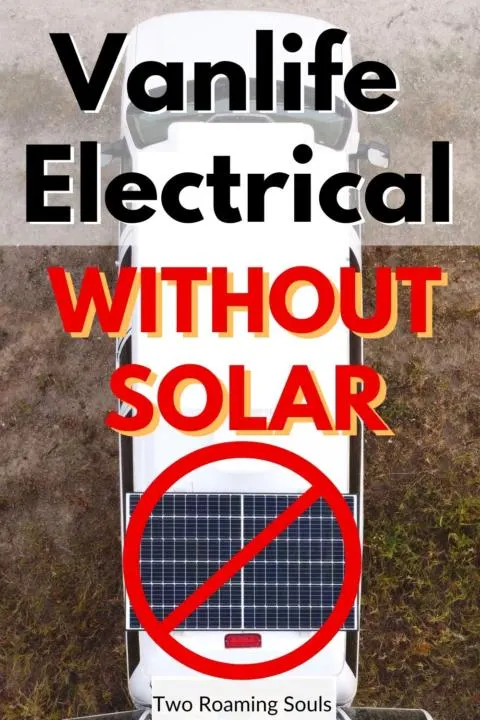

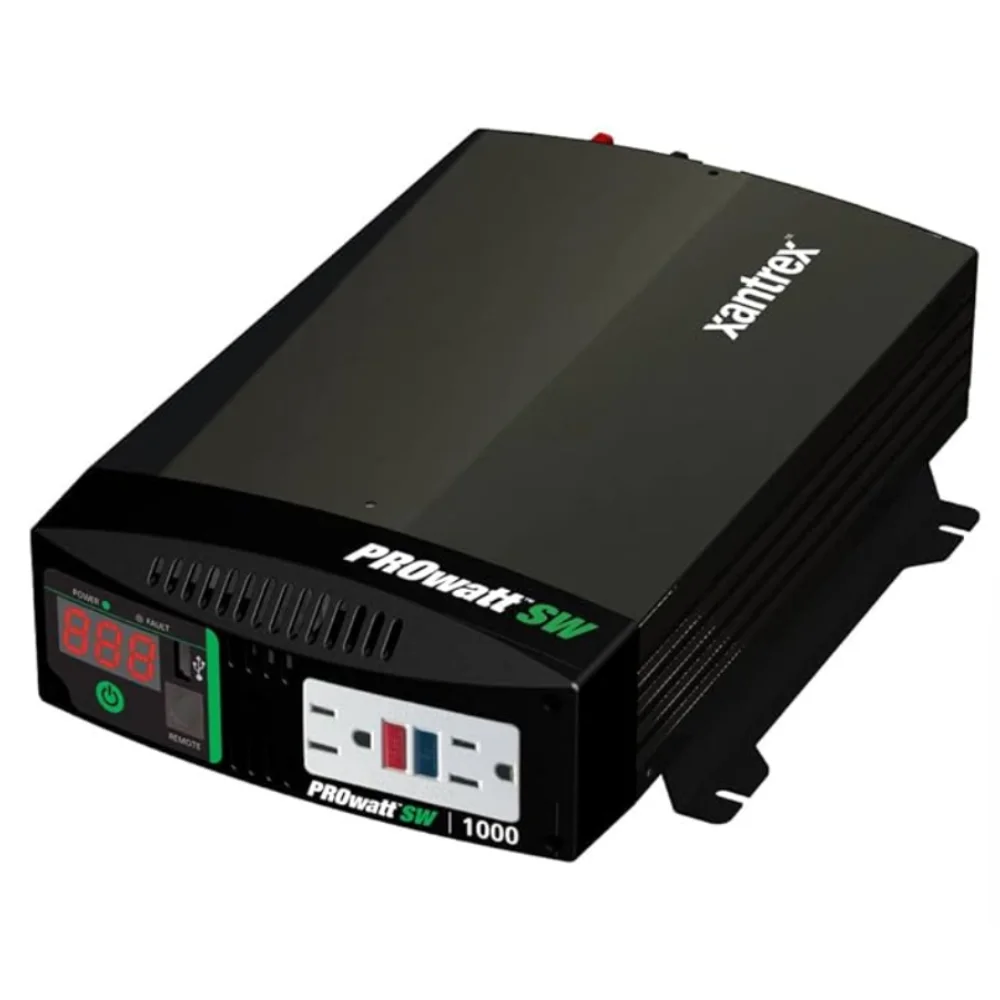
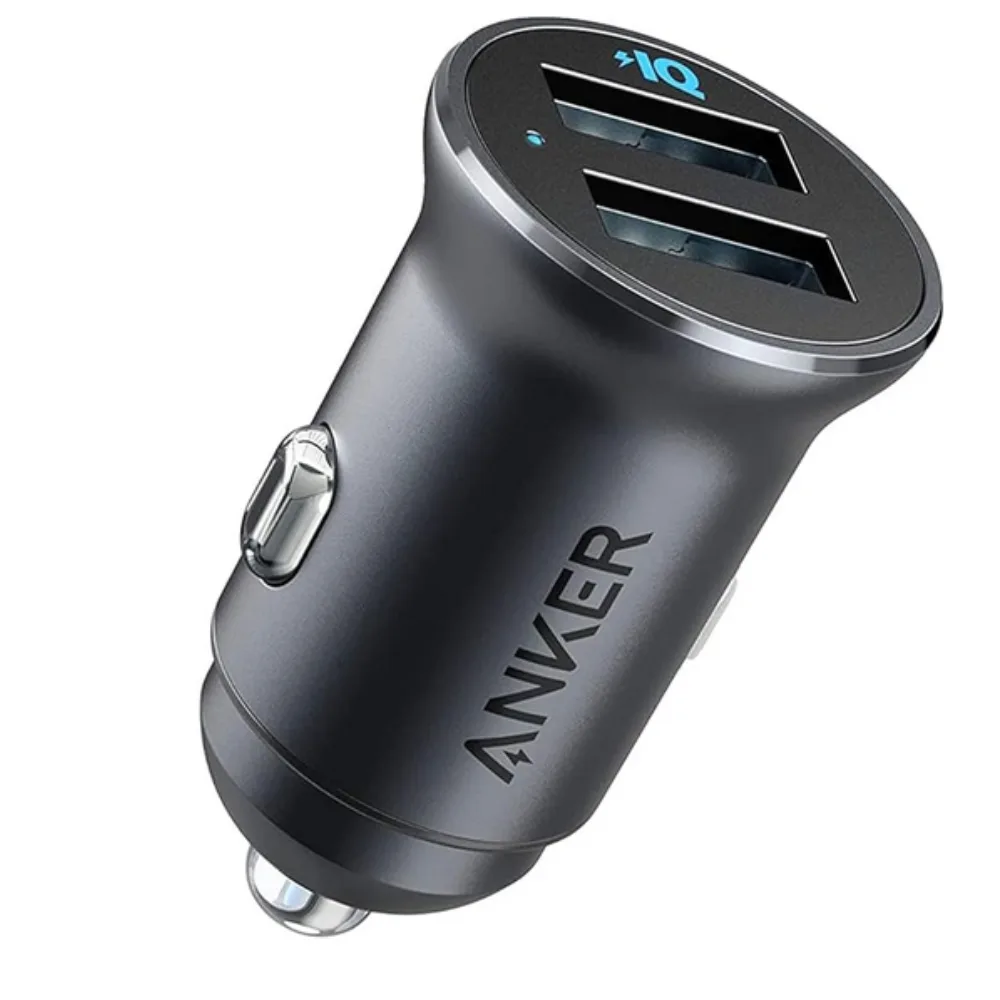
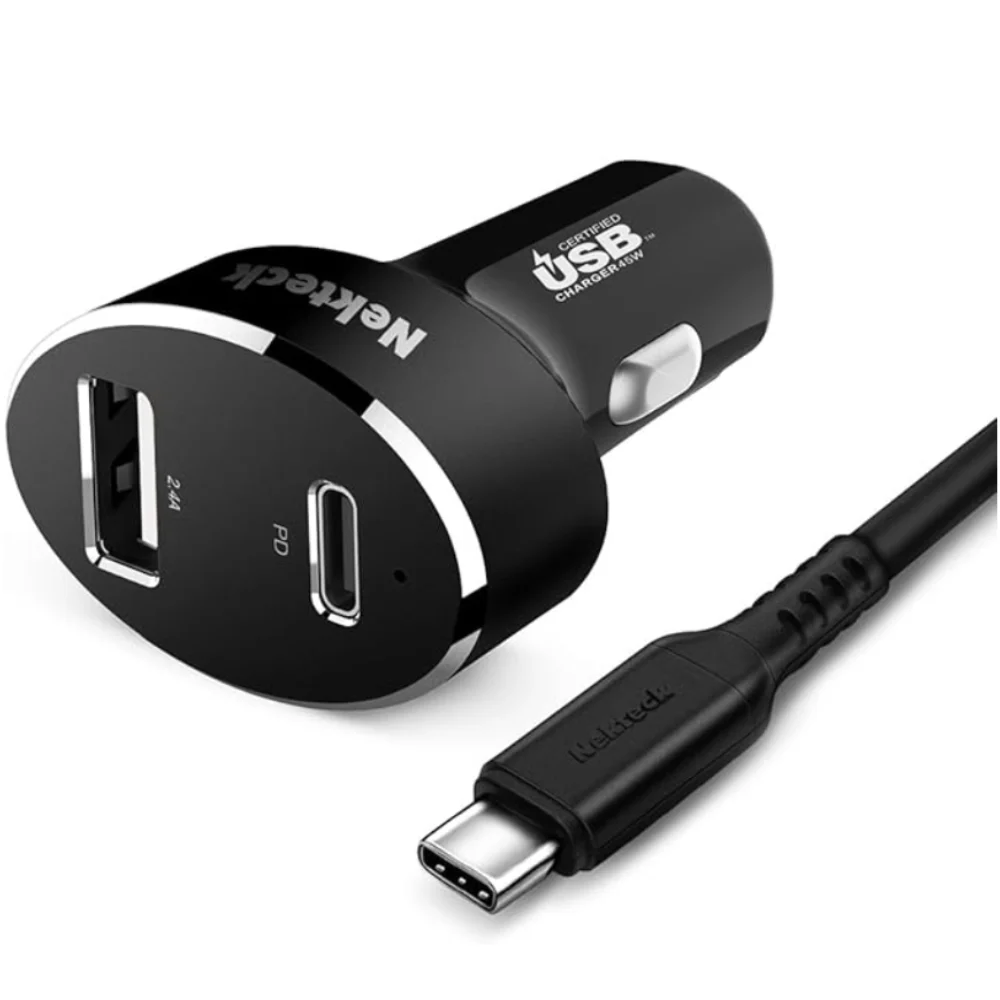
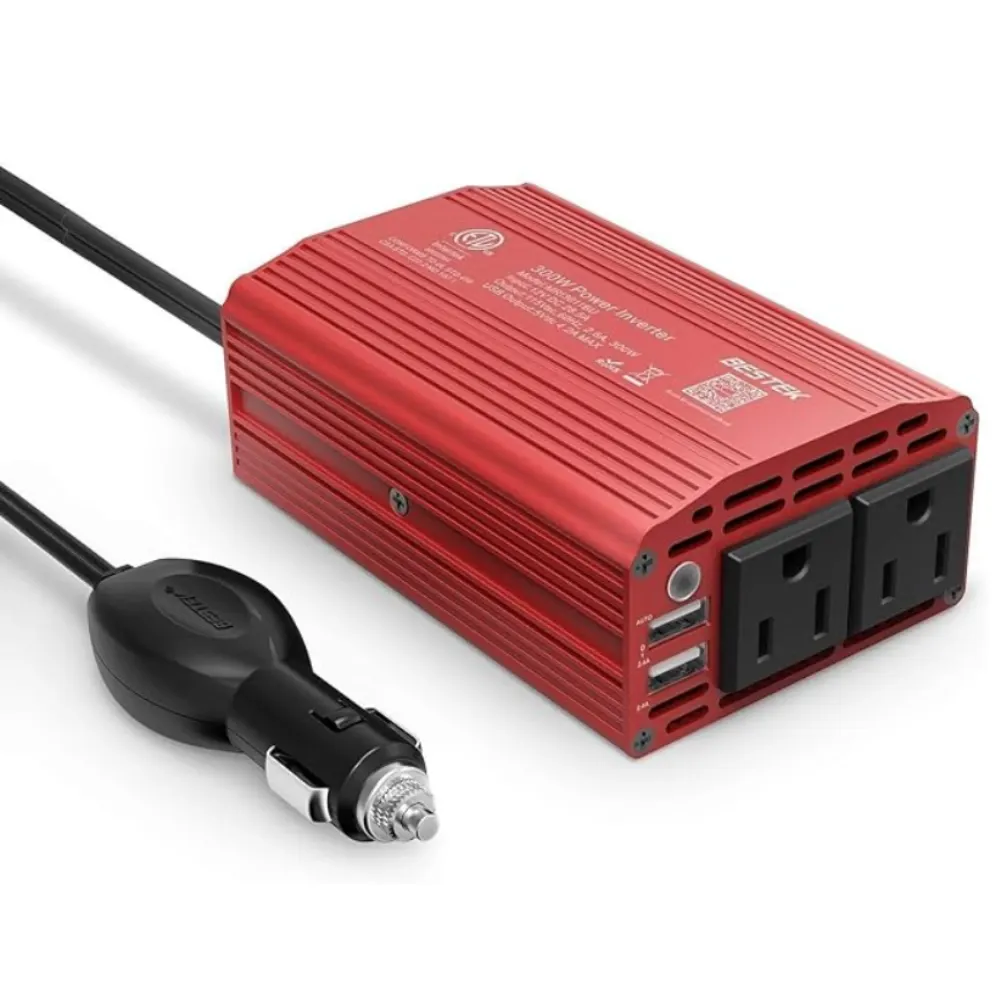
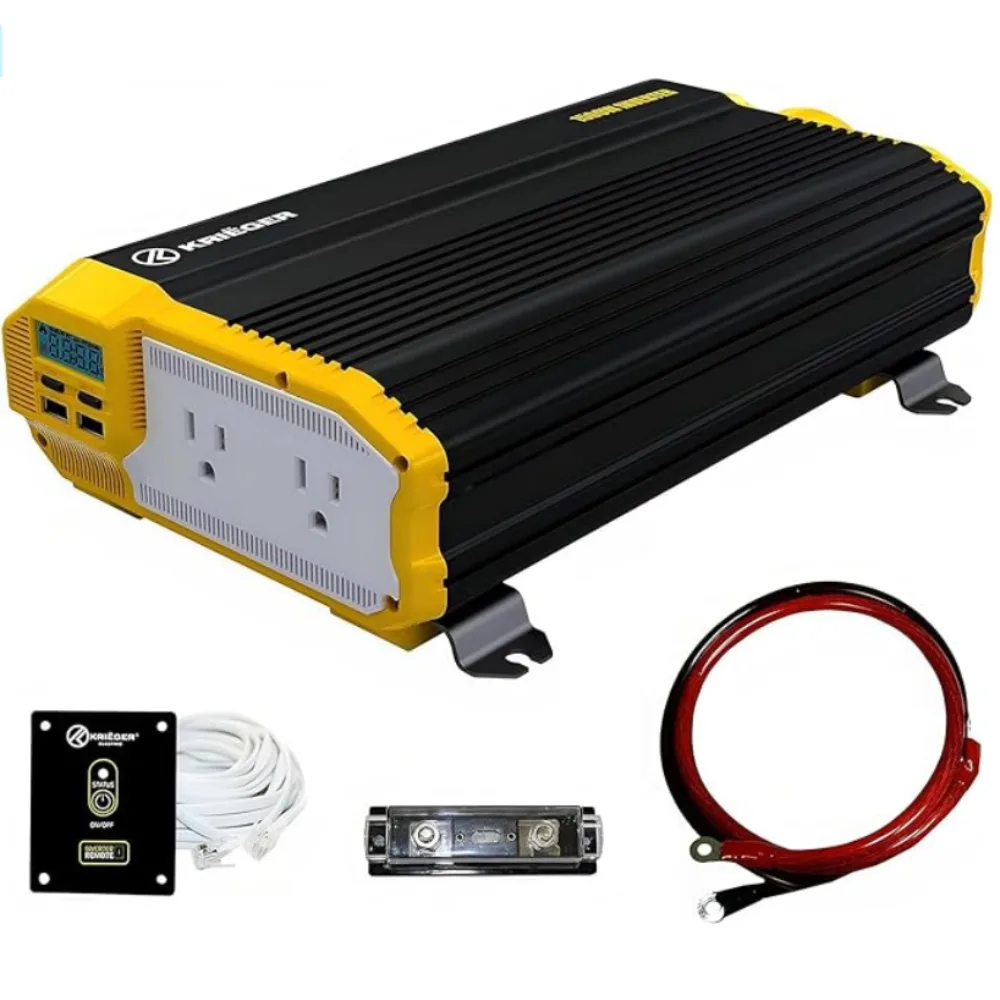
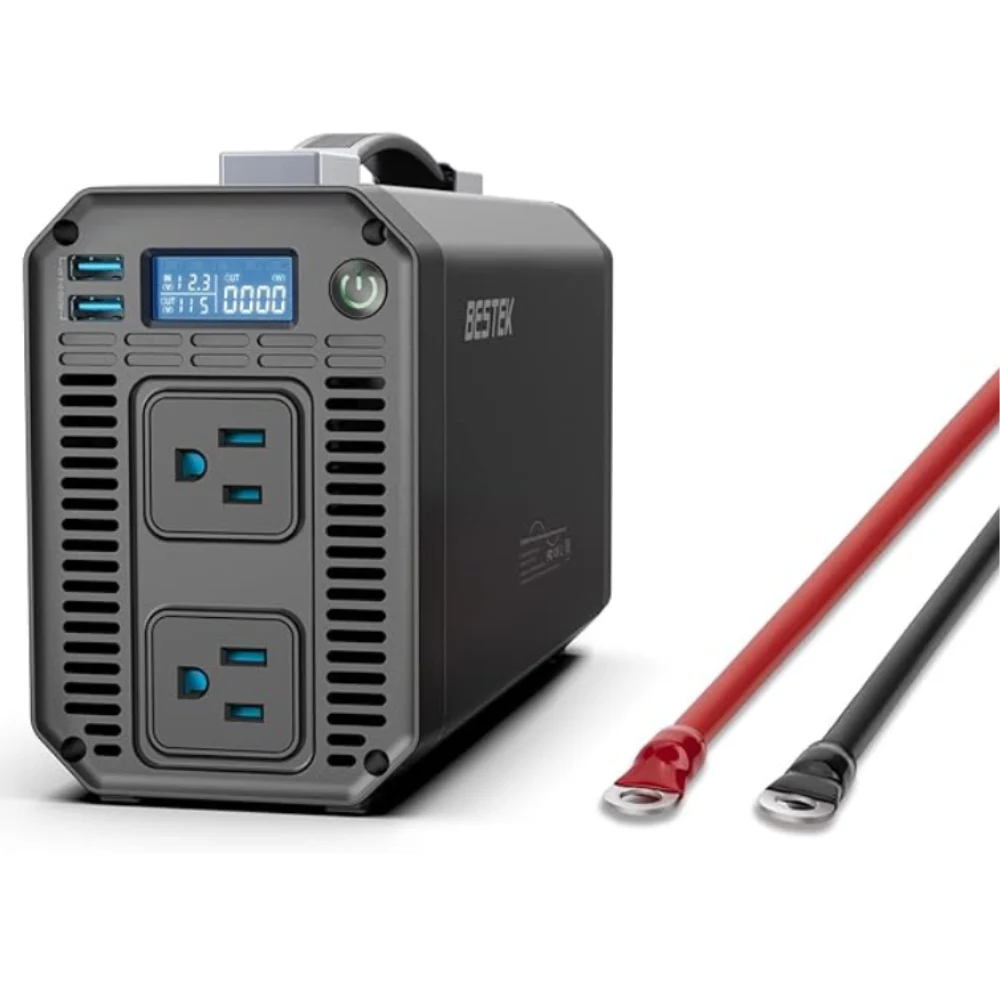
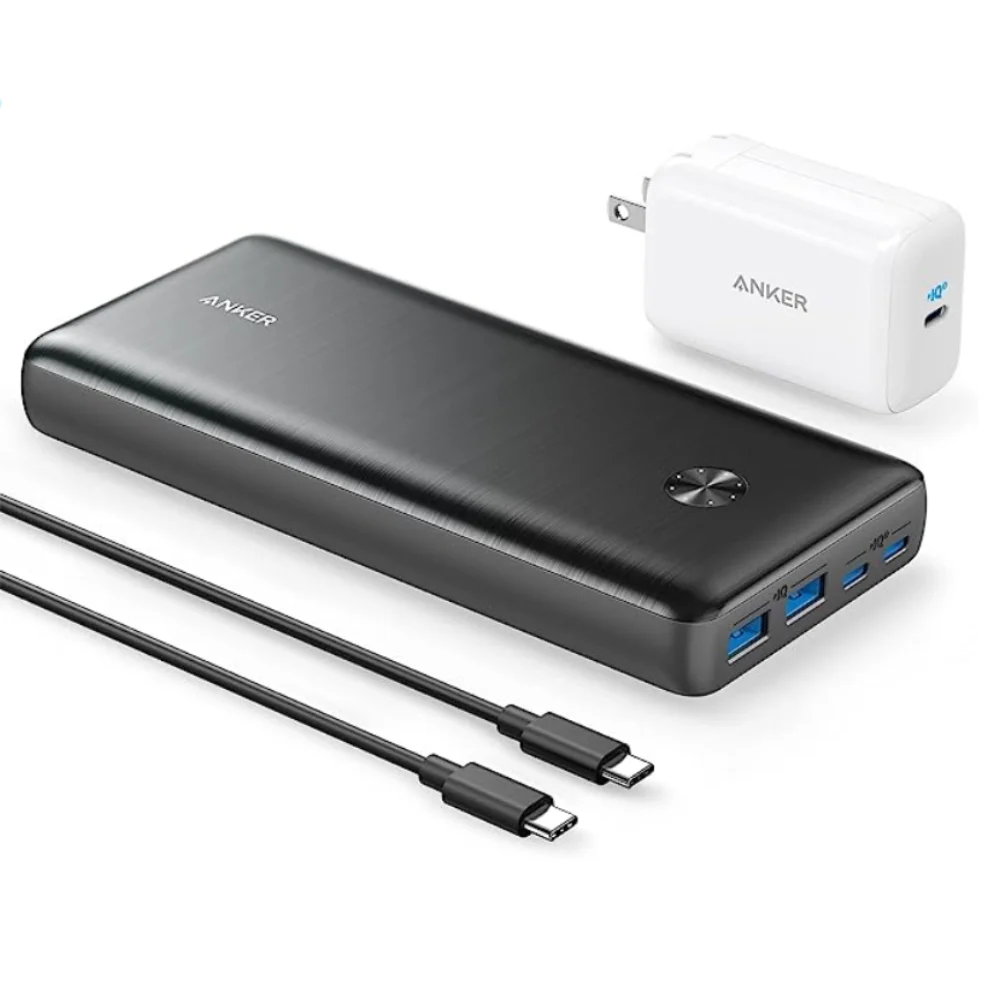
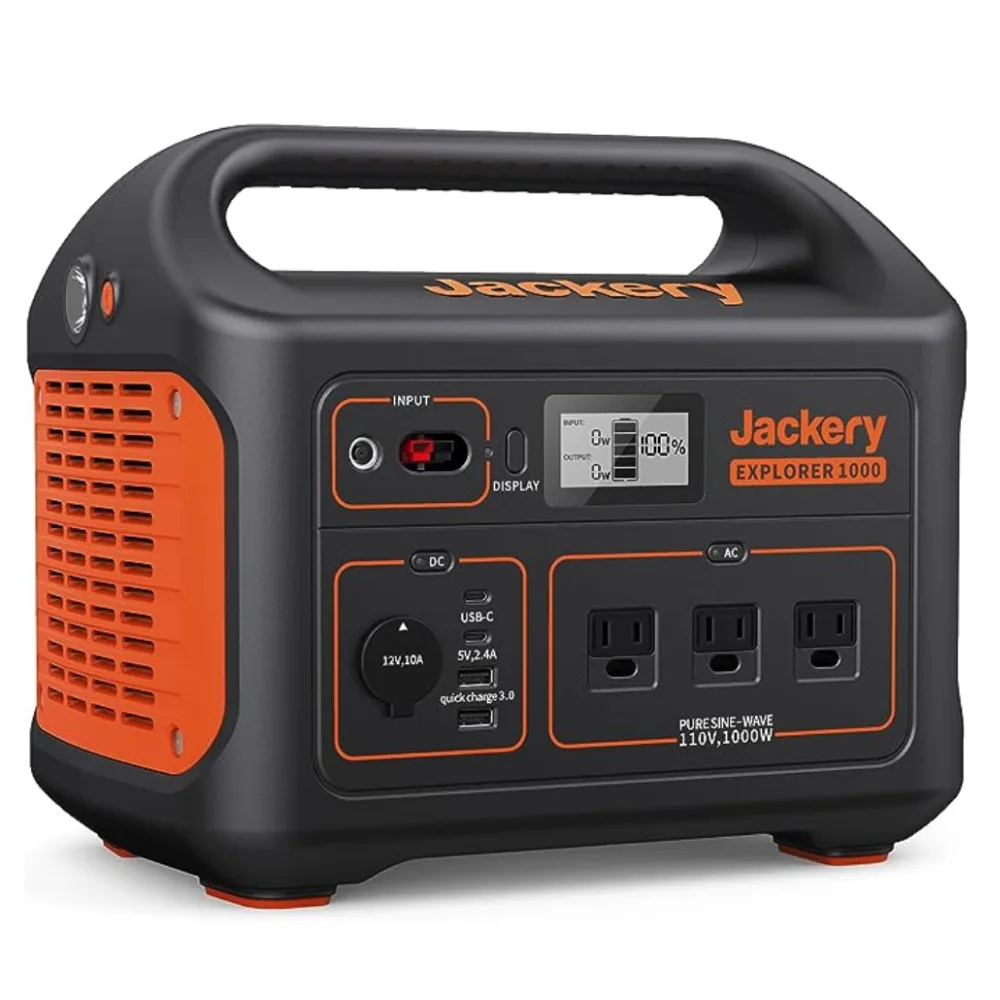
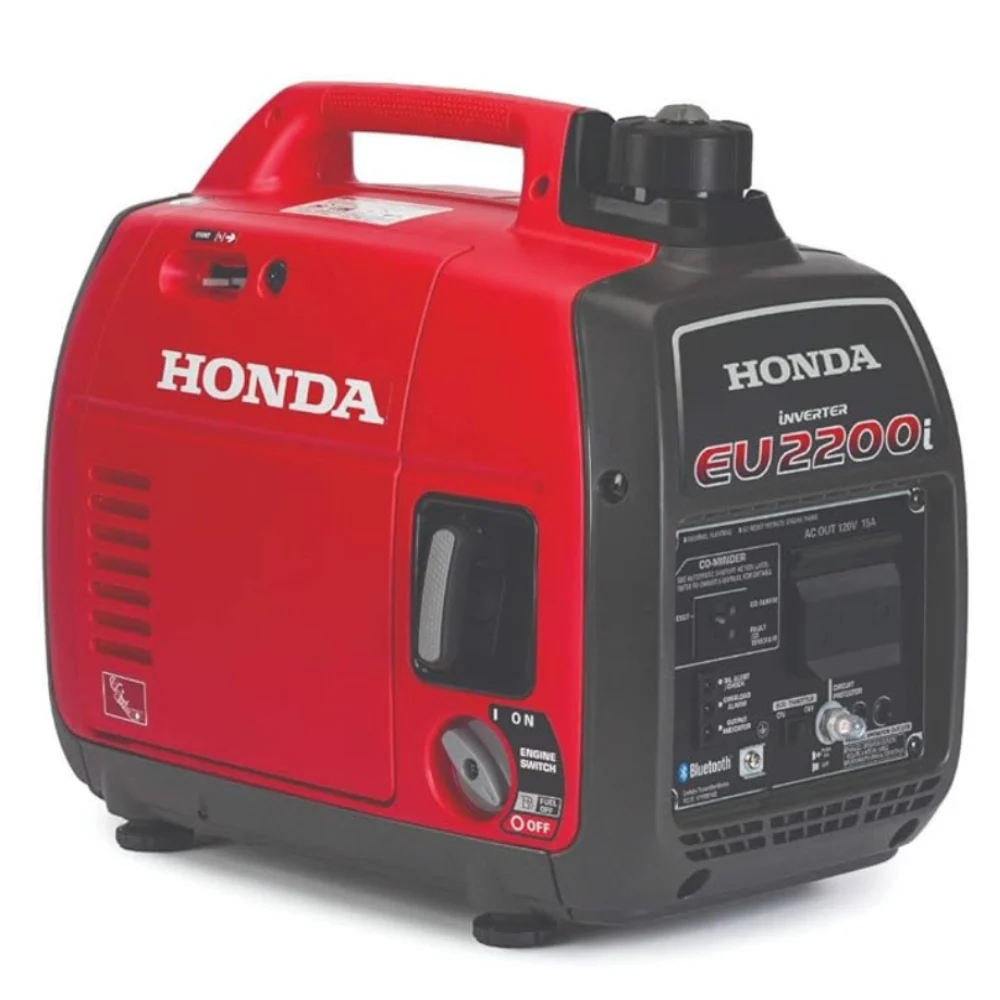
Van Conversion Build Order | Step By Step Guide - tworoamingsouls
Friday 7th of April 2023
[…] Or it is possible to have electricity in Vanlife without solar. […]
How To Get Vanlife Internet? | Best Devices For Portable Wifi - tworoamingsouls
Thursday 6th of April 2023
[…] Vanlife Electrical WITHOUT Solar […]
Vanlife: Campervan Lighting - tworoamingsouls
Wednesday 23rd of March 2022
[…] complete solar electrical system, using one of these top portable solar-powered generators, living Vanlife without solar, or simply operating off disposable batteries, there are great lights to improve your living […]
10 Vanlife Essential Items You Must-Have - tworoamingsouls
Wednesday 6th of October 2021
[…] But don’t get me wrong, it is possible to live in a camper van without an elaborate solar set up. […]
DIY Solar Panel Tilt Mount For A Campervan or RV - tworoamingsouls
Wednesday 17th of March 2021
[…] If you’re struggling to get enough power, check out these other ways to charge your battery without solar: Vanlife Electrical WITHOUT SOLAR […]